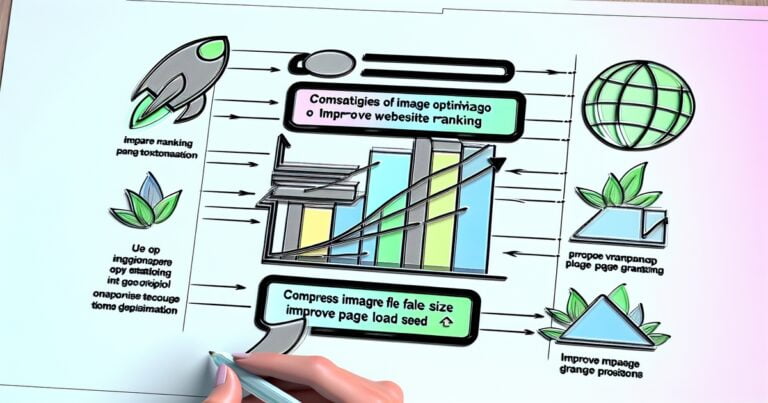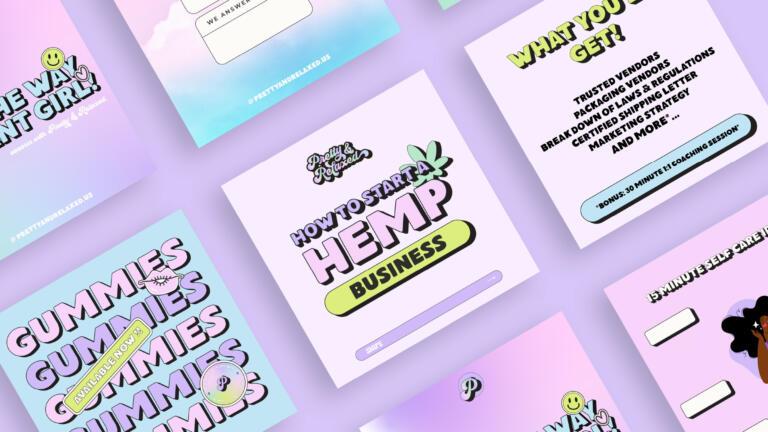The Importance of Connecting with Your Audience through Marketing Copy
In today’s digital age, it is more important than ever to connect with your audience through marketing copy. With so much content available online, consumers are becoming increasingly selective about what they read and engage with.
If your marketing copy fails to resonate with potential customers, you risk losing their attention and ultimately their business. Connecting with your audience goes beyond simply providing them with information about your product or service.
It involves understanding their needs, wants, and pain points so that you can craft copy that speaks directly to them. When done effectively, connecting through marketing copy can lead to higher engagement rates, increased brand loyalty, and ultimately more conversions.
Overview of the Main Points
This article will explore strategies for creating compelling marketing copy that connects with your target audience. We will begin by discussing the importance of understanding your audience and how to create buyer personas that allow you to tailor your messaging accordingly. Next, we will dive into specific techniques for crafting compelling copy such as writing attention-grabbing headlines, using storytelling techniques, highlighting benefits over features, and incorporating social proof.
We will then discuss the importance of tailoring messaging for different channels such as social media and email marketing. We will touch on measuring success by setting clear goals for campaigns and tracking metrics such as click-through rates and conversion rates.
Throughout this article, we’ll provide real-world examples from successful brands across various industries so that you can see these strategies in action. By the end of this article, you should have a deeper understanding of how to create effective marketing copy that resonates with your target audience and drives results for your business.
Understanding Your Audience
In order to connect with your audience through marketing copy, you must first understand who your target audience is. One of the key components of effective marketing is being able to identify and analyze the needs, wants, and pain points of your potential customers. This means delving deeper than just demographic information such as age and gender and digging into their motivations, aspirations, and challenges.
Identifying Your Target Audience
Start by identifying who your ideal customer is. Consider factors such as their interests, behaviors, values, lifestyle choices, income level, education level, etc. Conduct market research surveys or interviews to gain a better understanding of what motivates them.
Once you have identified your target audience, you can segment it into different groups based on specific characteristics. For example, if you are a clothing retailer targeting women in their 20s and 30s, you may want to segment them further based on whether they are college students or young professionals.
Analyzing Their Needs Wants And Pain Points
Once you have a clear picture of who your target audience is and how they can be segmented into different groups based on specific characteristics or behaviors – it’s time to analyze their needs wants and pain points. What are the problems that they face? What challenges do they need assistance with?
What motivates them to take action? By carefully analyzing the answers to these questions – you will be able to craft marketing copy that speaks directly to their needs.
Creating Buyer Personas To Better Understand Your Audience
Buyer personas are fictional representations of your ideal customer that are based on real data about customer demographics as well as behavior patterns from market research surveys or interviews. They can help bring clarity not only about what motivates these individuals but also how they make purchasing decisions.
By creating buyer personas for each segment within your target audience, you can better understand their specific needs and tailor your marketing copy to appeal to them. Buyer personas can help you create copy that speaks directly to your target audience, highlighting how your product or service can solve their problems or meet their needs in a way that resonates with them.
Crafting Compelling Copy
Headlines that Grab Attention and Entice Readers to Keep Reading
The headline is the first thing readers see when they come across your marketing copy, so it’s crucial to make it attention-grabbing and compelling. A good headline should be short, simple, and clear in conveying the main message of your copy. However, being clear doesn’t mean being boring or generic.
Instead, aim for headlines that are creative, intriguing or thought-provoking. One effective approach is to use questions in your headlines that resonate with your audience’s pain points or desires.
For example, “Are You Struggling to Boost Your Sales? Here’s How We Can Help.” Another technique is to use numbers or statistics in your headline to capture the reader’s attention. For instance, “5 Proven Strategies to Double Your Website Traffic in Just One Month.”
Storytelling Techniques That Create an Emotional Connection With Your Audience
Humans are wired for stories; we relate and respond more strongly to narratives than dry facts or data. By incorporating storytelling techniques into your marketing copy, you can create an emotional connection with your audience that motivates them to take action.
One effective way of doing this is by telling a story about how your product or service has helped a customer overcome a problem or improve their life. This enables potential customers can better visualize themselves benefiting from what you offer.
Another technique is personalizing storytelling which means using anecdotes from real people who have had an experience with the product/service you offer. Potential customers can relate better when they see that there are people like them who have benefited from what you’re offering.
Highlighting Benefits of Your Product/Service Not Just its Features
Features describe the characteristics of a product while benefits explain how those features will solve a customer’s problems or improve their lives. Customers want to know what your product will do for them, not just what it is.
By highlighting the benefits of your products or services, you are providing concrete reasons why potential customers should buy from you. For instance, if you’re selling a fitness program, don’t just list its features such as “12-week workout plan” or “nutrition guide.” Instead, emphasize the benefits like “Get fit and healthy in just 12 weeks” or “Achieve the body of your dreams with our personalized nutrition guide.”
Incorporating Social Proof and Testimonials to Build Trust With Potential Customers
Social proof is the concept that people naturally follow the actions of others when making decisions. Incorporating social proof into your marketing copy can increase trust and credibility with potential customers. Testimonials are one way to incorporate social proof into your copy.
Testimonials should be from real customers who have experienced positive results from using your products or services. Be sure to include their full name, location (if possible), and a picture if available.
Another approach is showing data on how many people have already benefitted from using your product/services; this builds credibility of the success rate on offer. By incorporating these elements into your marketing copywriting, you can create compelling content that connects with potential customers while building trust and credibility in what you offer.
Tailoring Your Messaging for Different Channels
One of the biggest mistakes businesses make when crafting their marketing copy is using a one-size-fits-all approach. However, different channels require different messaging strategies in order to be effective. Social media, email marketing, and website copy all have unique nuances that must be taken into consideration in order to successfully connect with your audience.
Adapting your copy for different marketing channels such as social media, email marketing, and website copy
Social media requires messages to be short and sweet. Twitter’s 280-character limit means that you need to get your point across quickly while still being engaging enough to catch the reader’s attention. Instagram relies heavily on visuals, so incorporating eye-catching images or graphics is key.
In contrast, email marketing allows for more detailed messages that can fully showcase the benefits of your product or service. Website copy needs to strike a balance between providing enough information while not overwhelming the reader.
It’s important to remember that each channel has its own unique purpose as well. For example, social media is great for creating buzz and promoting new products or services in an informal way.
Email marketing is ideal for nurturing leads and building relationships with potential customers through personalized messaging. Websites are often where people go when they are ready to make a purchase decision, so providing clear information and calls-to-action are critical.
Understanding the nuances of each channel and how they impact messaging
The nuance of each channel extends beyond just message length or purpose – it also includes tone and language choice. The tone on social media needs to be conversational and light-hearted while still being professional; whereas email marketing may require a more formal tone depending on the industry or audience being targeted.
Understanding these differences ensures that your messaging effectively resonates with your audience on the channel where they are most likely to engage with your brand. It’s important to also keep in mind the demographics of each channel.
For example, Facebook and Instagram tend to skew younger while LinkedIn is more geared towards professionals. Your messaging should reflect the interests and values of the audience you are targeting on each platform, ensuring that you connect with them effectively.
Measuring Success
Your marketing campaigns are only as successful as the goals you set for them. If you don’t have a clear idea of what you want to achieve, it’s difficult to measure success. Setting SMART (Specific, Measurable, Achievable, Relevant, and Time-bound) goals can help you stay on track and determine whether your efforts are paying off.
For example, if your goal is to increase website traffic by 20% over the next three months, you can track your progress using metrics such as click-through rates and page views. By monitoring these metrics regularly, you can adjust your strategies as needed to ensure that you’re meeting your objectives.
The Importance of Tracking Metrics
Tracking metrics is essential for determining the effectiveness of your marketing campaigns. Metrics such as click-through rates and conversion rates provide valuable insights into how well your content is resonating with your audience. Engagement levels can help you understand whether your messaging is effectively engaging potential customers.
Regular monitoring of these metrics allows you to identify areas where improvements can be made and make adjustments accordingly. For example, if click-through rates are low on a particular channel or piece of content, it may be time to reevaluate headlines or messaging in that area.
Adapting Strategies Based on Data Analysis
Data analysis should drive decision-making when it comes to adjusting marketing strategies. As mentioned earlier, tracking metrics helps identify areas where improvements can be made.
However, simply collecting data isn’t enough—you need to analyze it properly in order to determine what changes need to be made. For instance, if sales aren’t increasing even though traffic is up on a website after implementing a new campaign or strategy indicates a problem with conversions rather than attracting visitors alone.
By analyzing data from various sources (e.g., Google Analytics), patterns may emerge that will enable marketers at all levels within an organization identify what tactics are or aren’t working. With this data, you can create a more effective marketing strategy that will better resonate with your audience and achieve your goals.
Conclusion
After reading this article, you should have a better understanding of how to craft marketing copy that resonates with your audience. It’s important to first understand who your audience is and what they want or need before crafting any messaging.
Once you have a clear understanding of your target audience, you can create compelling headlines and use storytelling techniques to create an emotional connection with potential customers. Remember to highlight the benefits of your product or service rather than just its features and incorporate social proof and testimonials whenever possible to build trust with potential customers.
Tailoring your messaging for different channels is also crucial for effective marketing campaigns. By setting clear goals and tracking metrics, you can measure the success of your marketing campaigns and make adjustments as needed.
It’s important to remember that effective marketing copy takes time and effort, but it can greatly impact the success of your business. Encouragement: Don’t be afraid to experiment with different strategies and messaging until you find what works best for your business.
Keep in mind that connecting with your audience through marketing copy is an ongoing process, so continue analyzing data and making adjustments as needed. By following these tips, you’ll be well on your way to creating effective marketing copy that truly connects with your target audience.








